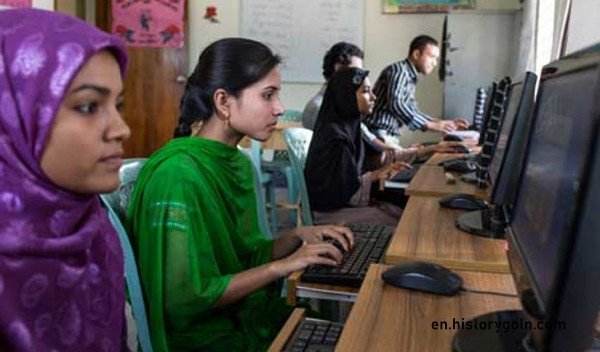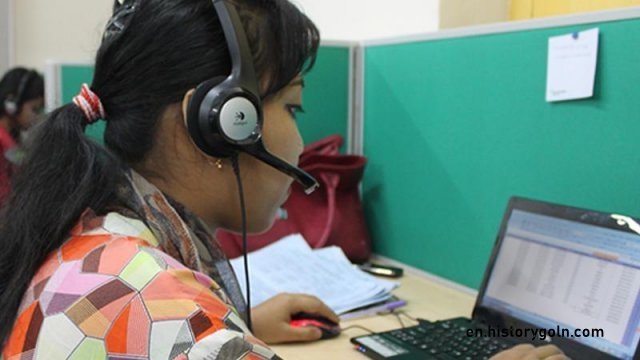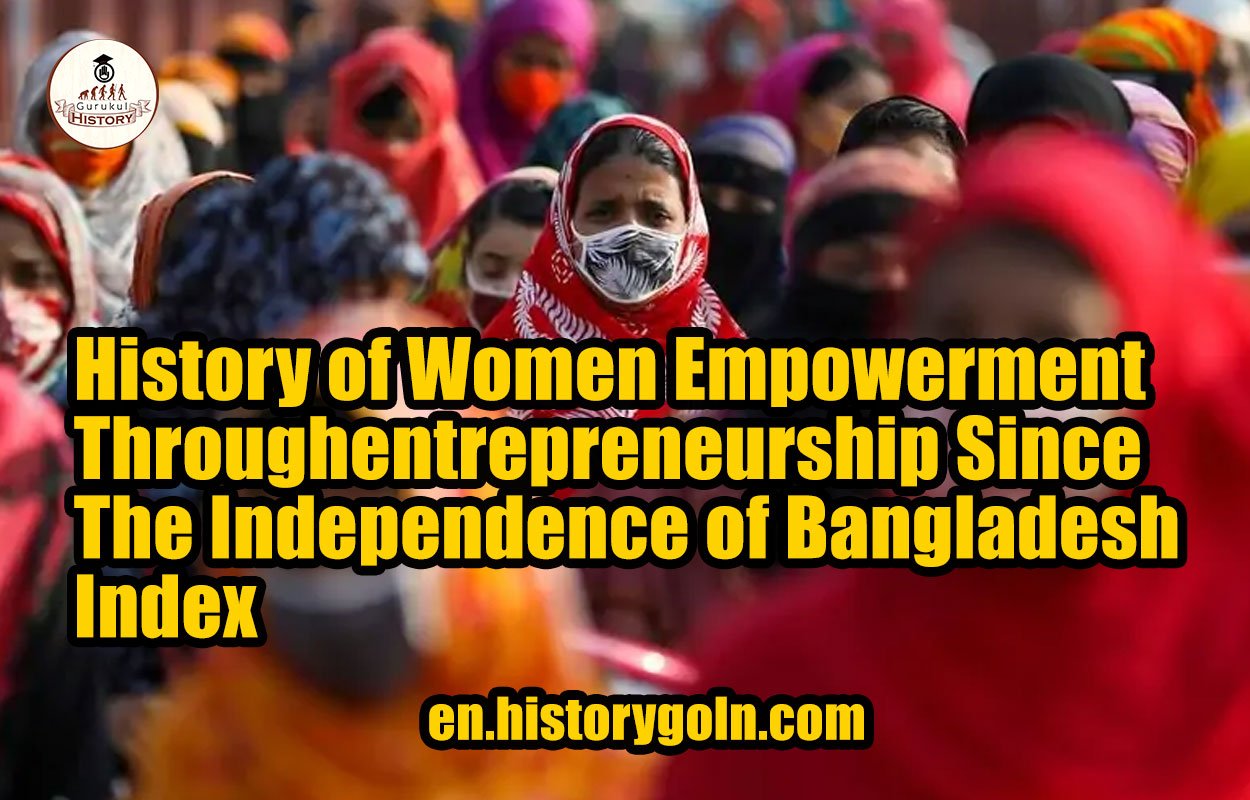History of Women Empowerment Throughentrepreneurship Since The Independence of Bangladesh Index. I am pleased to express my heartiest gratitude and appreciation to my supervisor, Professor Dr. Mesbah Kamal, Department of History, University of Dhaka, for his valuable advice, scholastic guidance and careful supervision throughout the research work and constructive criticismand suggestion in the preparation of the manuscript.
I wish to express heartfelt respect and gratitude to my respected teacher Professor Dr. Ahmed Jamal, Department of History. University of Dhaka, for his thoughtful comments and recommendations on my research work. I am also ever grateful and immensely indebted to Dr. Abdus Samad, Department of History, Jagannath University. Dhaka for his valuable advice and helpful comments for the improvement of the thesis.
History of Women Empowerment Throughentrepreneurship Since The Independence of Bangladesh Index

Chapter One : Introduction
- Introduction of History of Women Empowerment
- The Concept of Women’s Empowerment
- The Concept of Entrepreneurship
- Definition of Micro, Small and Middle Enterprise
- Literature Review
- Research Objectives
- Research Methodology
- Research Structure
Conclusion
This study is empirical research on women entrepreneurs of Bangladesh since independence. Thirty women entrepreneurs, engaged in diverse sectors of business and managerial activities from different parts of Bangladesh were interviewed.
However, this study is not above limitations. The present study covers women engaged in small and medium enterprises, while large enterprises remain excluded. Collecting data through interviews was immensely time consuming and difficult, as women entrepreneurs are extremely busy and, in some cases, commercial.
Some tend to decline the request to participate in interviews that will not be published in renowned newspapers that can provide them desired publicity. So, managing to get appointments to conduct interviews is quite difficult.
In addition to that, limitation of time and lack of official data resources were another two major issues. Therefore, conducting an inclusive, comprehensive, and wide study on women entrepreneurs that will present the complete and broad picture of the condition of women entrepreneurship in Bangladesh from a historical perspective has not been possible.
However, even though, the number of interviewed women entrepreneurs was small, to conduct an intensive study, instead of the survey method, the case study method or direct personal interview approach has been adopted.
Chapter Two: Self-Employed Women in Colonial East Bengal in the Early 20th century
- Introduction of Self-Employed Women in Colonial East Bengal
- Entrepreneurship in Colonial Bengal
- Economic Role of Women in Colonial Bengal
- Socio-Economic Aspects of Women’s Participation in Labor Force
- Upper-class Women in Entrepreneurial Activities
- Women’s Participation in Trade and Commerce
- The Impact of Modernization of Colonial Economy on Women’s Self-Employments
- Factors behind Circumscription of Women’s Self Employment
Conclusion
Women, whether they were from the sheltered upper class or somewhat free working women of the lower class, have contributed to the family income. Upper-class women conducted domestic chores inside their homestead, contributed economically to the family by providing unpaid labor. Despite the strict restrictions of purdah and social taboos, when opportunities presented themselves, few of the bhadramahila had proven themselves capable of estate management and business.
On the other hand, relatively independent lower-class women, in addition to their domestic duties contributed to the family income by assisting their male members in agricultural activities or caste specific occupations or engaging themselves in non-agricultural occupations of production and selling.
In the harsh reality of poverty, destitution, widowhood and other oppressive social norms poorer women were involved in a wide range of trade and commerce to support their families or sometimes themselves.
Women of both classes struggled to survive and find their identity in the suppression of traditional customs and rapid modernization of the British colonial period. The aggression of modern industrialization in the nineteenth century snatched poor women’s employment and devalued their economic contribution.
Whereas for the upper-class respectable women, despite the initiation of social reforms for female emancipation in the nineteenth century, they were denied and excluded from access to gainful employment and economic support.

Chapter Three: Women Entrepreneurship in Bangladesh: Features and Factors
- Introduction of Women Entrepreneurship in Bangladesh
- Entrepreneurship in East Pakistan
- Women Entrepreneurship in East Pakistan.
- Women Entrepreneurship in Bangladesh.
- Trends and Patterns of Women entrepreneurship in Bangladesh..
- Urban Women Entrepreneurs
- Rural Women Entrepreneurs
- Some General Features of Women Entrepreneurship in Bangladesh
- E-commerce and Women Entrepreneurship in Bangladesh
- Push and Pull Factors behind the Development of Women Entrepreneurship in Bangladesh..
Conclusion
This chapter attempted to give an overview of the main features and motivating factors of women’s entrepreneurship development in Bangladesh. Like the global economy, women entrepreneurship is a recent phenomenon in the country. During the twenty-four years, Pakistan rule there had been less opportunity for the development of new entrepreneurial class, let alone female entrepreneurs.
After independence, the changing socio-economic conditions encouraged women’s greater participation in the labor force, thus, more women got engaged in business. Although slow, women are rising above the socio-economic and cultural odds. Although slow, women are rising above the socio-economic and cultural odds.
Factors such as unemployment, economic necessity, need for self-independence, government and non- government support services had encouraged women to take the risk of doing business despite existing social and financial impediments. The next chapter will discuss the government and non-government initiatives since the independence of Bangladesh in the development of women entrepreneurship.
Chapter Four: Role of Government and NGOs in Women Entrepreneurship Development
- Introduction of Role of Government and NGOs in Women Entrepreneurship Development
- The Government Policies and Programs in the Support of Female Entrepreneurship
- Women Entrepreneurship in Five-Year Plans of the Government of Bangladesh
- Women Entrepreneurship development-related International Agreements Ratified by the Government of Bangladesh
- The Role of Bangladesh Bank in Female Entrepreneurship
- Different Government and Non-Governmental Support Services for Women Entrepreneurship Development
- The Emergence of NGOs in Bangladesh.
- The Impact of Microfinance on Women Entrepreneurship and Empowerment
- The Three Leading Microfinance Institutions and their Contribution to Rural Women Entrepreneurship Development…
Conclusion
This chapter focused on various initiatives of the government and non-governmental organizations in the development of women entrepreneurship in Bangladesh. Since the beginning, both governments had NGOs that had emphasized the inclusion of the female population in the development process.
However, the incorrect presumption of policymakers about women’s supplementary economic role, had limited the development of female entrepreneurship within traditional income-generating activities.
Later, specifically, the post-2000s, the policymakers recognized the necessity of mainstreaming women in industrial policies and thus adopted several female entrepreneurship friendly measures.
While the NGOs introduced micro-financial services in Bangladesh, especially aiming the rural women. The rapid penetration of microcredit services had paved the way for rural women’s involvement in entrepreneurial activities.
Although, microfinance institutions were not free from criticism their approach allowed women to convert their household activities into economic activities. Their participation in special microcredit program certainly had far-reaching impacts on the poverty reduction of the country over the last few decades.
Despite the government and non- government efforts, due to the socio-economic barriers and poor implementation of the policies, the number of women entrepreneurs is still low in the country. The next chapter would try to shed light on the existing constraints and impediments of women entrepreneurship development in Bangladesh.
Chapter Five: Constraints of Women Entrepreneurship Development in Bangladesh
- Introduction of Constraints of Women Entrepreneurship Development in Bangladesh
- Socio-Economic Constraints in Women Entrepreneurship in Bangladesh
Conclusion
When it comes to assessing the performance of men and women in entrepreneurship. women-led enterprises tend to be found as underperformed. Their enterprises are generally smaller, grow more slowly, and are lessfinable.
Despite all these obstacles discussed above, an increasing number of Bangladeshi women are taking business as a career, and few even thriving in the domain but they are still marginalized because of multifaceted socio, economic, cultural, institutional, and executive restrictions. Since women have to struggle to achieve basic human rights in society, this inequality leaves them behind in opportunities to participate in economic quests than men.
The overall business environment remains unfavorable for women despite the government’s initiatives to mainstream women in the entrepreneurial activities of the country. Therefore, proper promotion and supervision are required to create a gender- friendly business milieu for the sustainable development of women entrepreneurship in Bangladesh.
Chapter Six: Women Empowerment through Entrepreneurship Development in Bangladesh
- Introduction of Women Empowerment through Entrepreneurship Development in Bangladesh
- Changing Patterns of Women’s Economic Inclusion in Bangladesh
- Case Studies on TenSelective Women Entrepreneurs
- Findings and Discussion

Chapter Seven : Conclusion
Even though the historical root of entrepreneurship in Bengal is evident since the ancient period, the development of East Bengal entrepreneurship had rather been a recent emerging component in economic development.
During the two centuries of British rule in Bengal, the development of industry and entrepreneurship in the Eastern region had remained derelict. In East Bengal, Bengali Muslims played nearly a marginalized role in yan entrepreneurial activities.
The existing limited trade and commercial activities in this region remained confined within Bengali Hindus, Marwaris, and British dealers. On the other, during this period women’s economic participation and activities were determined by the requirements of their social class.
The upper-class Bengali women remained sheltered inside the Andarmahals since seclusion had been considered a sign of overall affluence and status of Bengali Bhadralok families. However, except for a few unusual circumstances, upper-class Bengali women were rarely involved in business activities.
In their limited economic activities, educated women were engaged in socially respectable occupations like teaching and practicing medicines. Since the existing socio-economic reality of colonial Bengal was not favorable for lower-incomed Bengali women to stay in seclusion, therefore, for the sake of economic survival they were less subjected to restrictions.
In the village-based agrarian economy, they were engaged in independent occupations or assisted as a part of the household unit in the traditional occupations. Lower-incomed women had dominated local trade and production until the emergence of modern industries had damagingly affected their non-traditional source of independent incomes. As a result, a growing number of female independent earners began to concentrate in the rural agricultural occupations.
and credit, the inflexibilities of the administrative system created by the government of Pakistan, the process of indigenous entrepreneurship development of East Pakistan advanced sluggishly.
Indigenous enterprises owned by Bengalis were very small and large-scale enterprises that remained mostly in non-Bengali’s hands. The East Pakistan entrepreneurship remained limited in jute, textile, cotton, tea, and food products. And most of these industries were established rather late at the end of the 1960s as an attempt by Ayub Khan to make amends for the regional disparity.
At the year of emergence of Bangladesh industrial sector contributed only 7 percent of the country’s GDP. The condition of women’s economic role in society did not experience many alterations.
Although, a growing number of women were receiving higher education, but the female participation in the labor force of Pakistan was amongst the lowest in the world and its female population was amongst the highest unpaid female labor. According to the statistics of Pakistan, 1961, compared to 30,627 men only 185 women were categorized as proprietors and managers of enterprises.
After the independence of Bangladesh, the non- Bengali entrepreneurs migrated to Pakistan that created opportunities for the development of entrepreneurship for the first time. Although, the new government introduced the socialist experiments which led to nationalizing the industrial assets, subsequently, the succeeding governments gradually retreated from state-led entrepreneurship and decided to revive the private sector. Thus, new aspiring entrepreneurs began to emerge.
Almost all of the respondents shared that entrepreneurship had empowered them in multiple ways. The opportunity of creating employment for the less fortunate, promoting indigenous crafts and tradition, managing and operating their enterprises, successfully delivering quality products to the clients, expressing their creativity through their products, developing networks, earning recognition and self-confidence are some empowering aspects of entrepreneurship for these women.
The fact that women entrepreneurs have the tendency of prioritizing destitute women and less fortunate people in their enterprise, their passion for uplifting the indigenous crafts and products proves their awareness and urge to make a greater difference in society and contribute to the nation’s economy.
Despite burdens of traditional responsibilities, countess obstacles created by the patriarchal society, and financial and technical limitations; determined and resilient women of Bangladesh are overcoming challenges to emerge as successful entrepreneurs.
Imaging as “own child”, women are raising their enterprises and thriving against all odds. More effective measures and their proper implementation can bring significant change in the landscape of women entrepreneurship which will ultimately lead to the social and economic prosperity of the country.
Therefore, intensive, inclusive, and nationwide survey and case study method research is much required on both existing women entrepreneurs and women who failed to initiate a start-up or survive as entrepreneurs Which will help the policymakers to understand real requirements for the development of women entrepreneurship in Bangladesh and take action accordingly.
See more :
